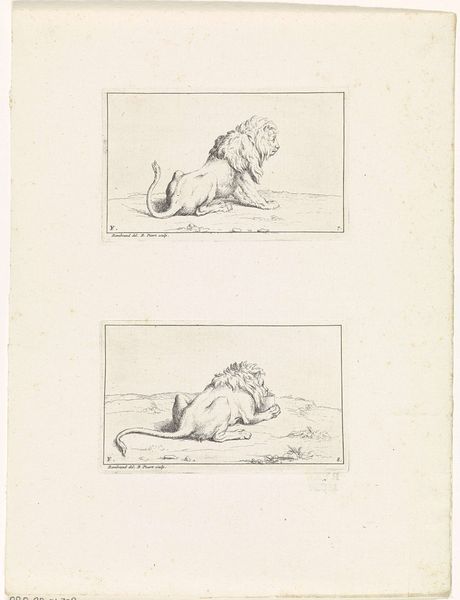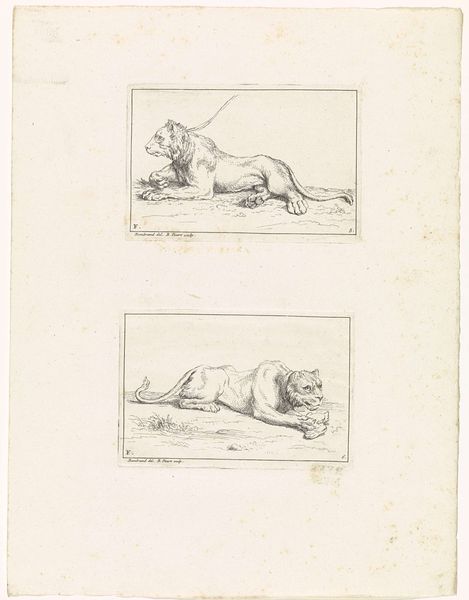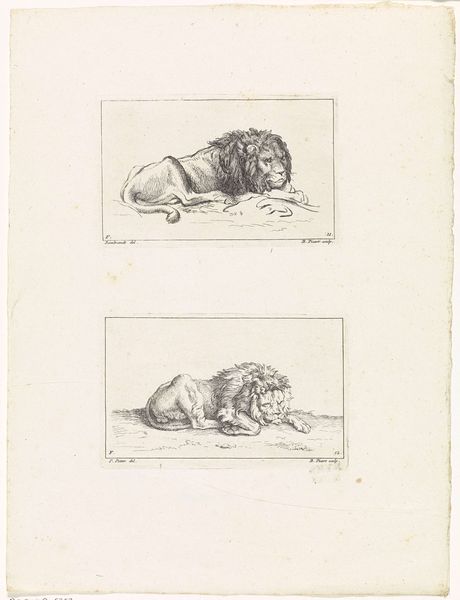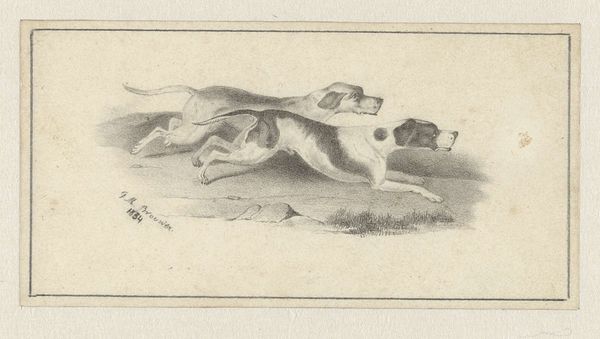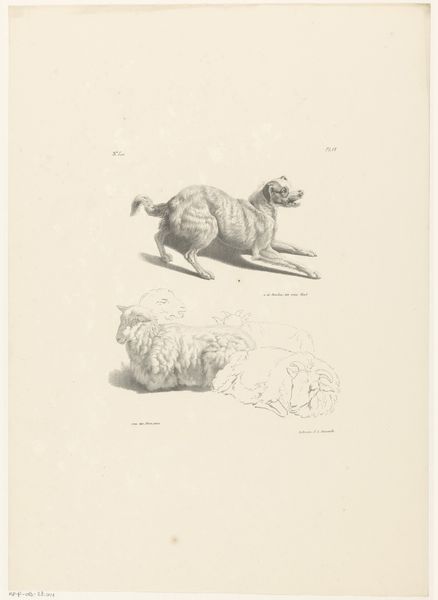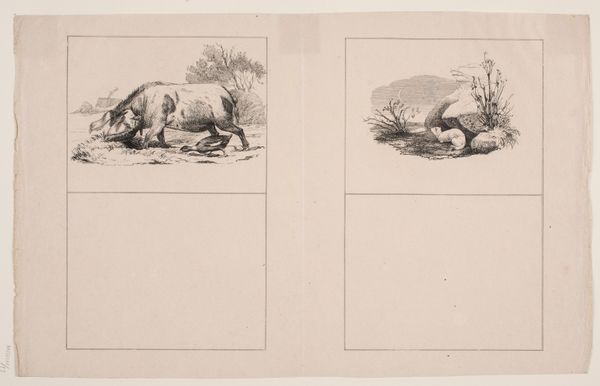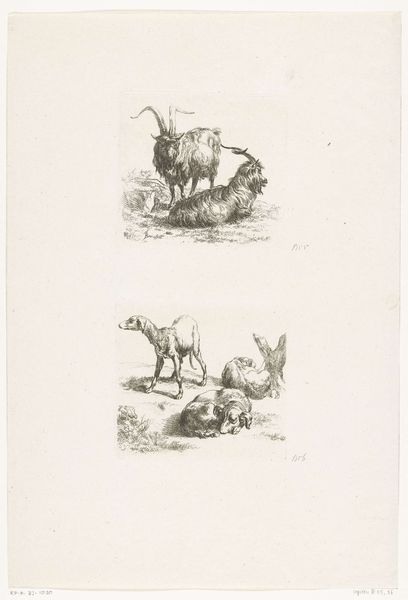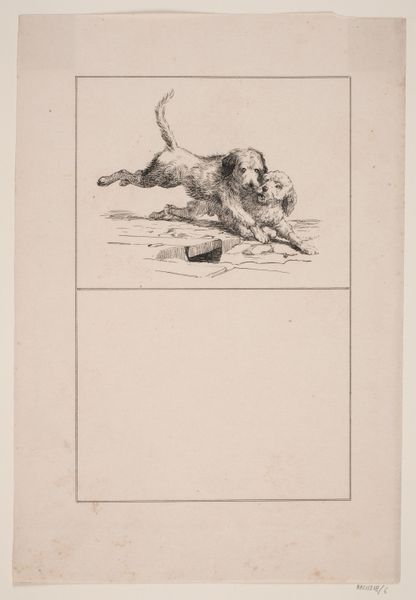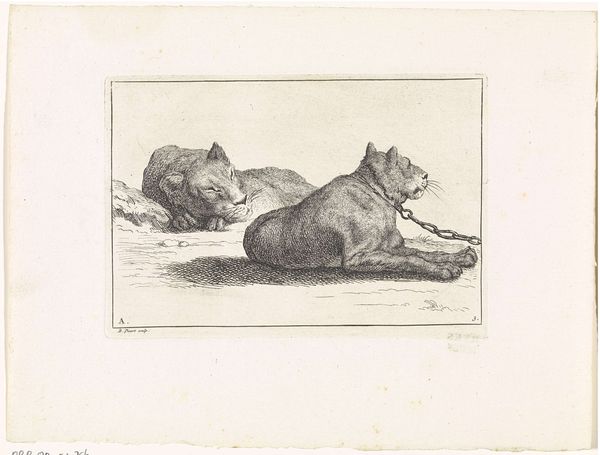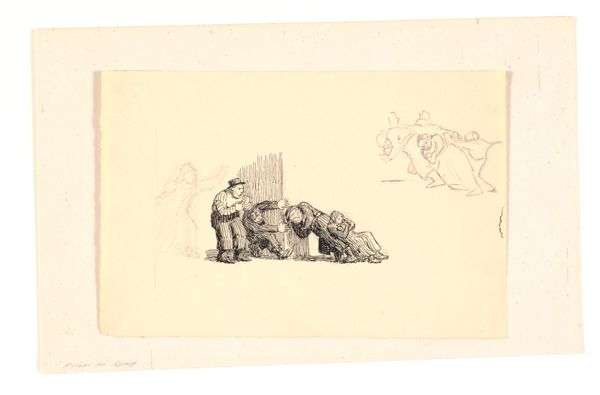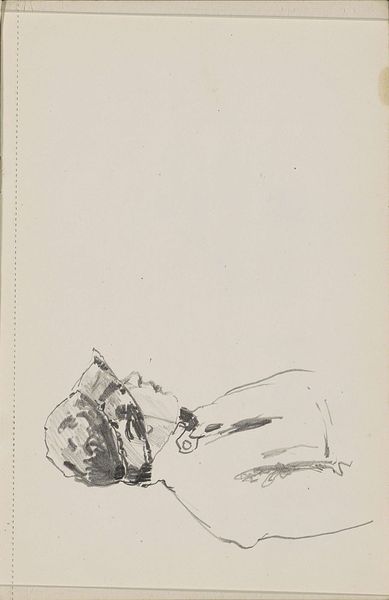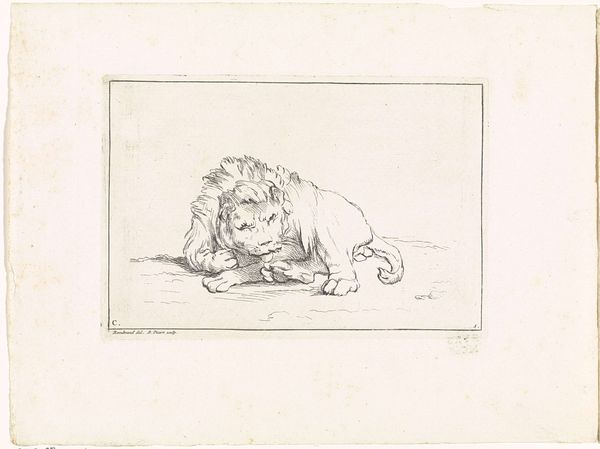
drawing, paper, ink, pen
#
portrait
#
drawing
#
quirky sketch
#
baroque
#
figuration
#
paper
#
personal sketchbook
#
ink
#
idea generation sketch
#
sketchwork
#
ink drawing experimentation
#
pen-ink sketch
#
sketchbook drawing
#
pen
#
genre-painting
#
storyboard and sketchbook work
#
sketchbook art
#
realism
#
initial sketch
Dimensions: height 70 mm, width 113 mm, height 70 mm, width 113 mm, height 267 mm, width 200 mm
Copyright: Rijks Museum: Open Domain
Curator: Let's talk about Bernard Picart’s "Two Lions," created in 1728, here at the Rijksmuseum. What are your initial thoughts? Editor: The ink drawings, displayed one above the other, initially convey a sense of quiet observation. There's a softness to them despite the subject matter. They almost seem to be sketches from a naturalist’s notebook. Curator: Indeed. Lions, especially in the Baroque period, often served as emblems of power and royalty, mirroring societal structures and divine right. But here, stripped bare to pen and paper, what statements are we left with about those symbolic roles? Editor: I find myself focusing on the paper itself. Its availability, its cost...pen and ink weren't particularly expensive but were not accessible to everyone. Who could afford this study? Was this piece linked to someone commissioned for more expensive artworks, like paintings or tapestries featuring lions? It’s all about the chain of labor and access. Curator: An interesting angle! And consider how the detailed, yet slightly languid, portrayal counters earlier depictions of lions solely as aggressive beasts. These are rendered in a manner that invites a kind of contemplation—almost inviting one to sympathize with the powerful animal. Editor: Yet it's just an initial sketch, an exploratory sketch—we lose a great deal of context to its specific purpose, so any kind of intent that could be projected upon the symbols might well have been in progress... Curator: Right, the ambiguity. Was he preparing designs for a decorative project? Or could he have intended to publish prints on animals as popular natural history became fashionable? The possibilities for meaning were broadening alongside social and intellectual shifts. Editor: Thinking about production, it shows us the material side of representation— how the cultural image is actually constructed step by step. The image feels accessible to copy or imitate; the medium lends itself easily for the transfer to other productions, be that in cheaper prints or other goods. Curator: This simple ink drawing offers a microcosm of evolving views on nature and authority in the 18th century. A study not just of form, but a re-evaluation of inherited symbols. Editor: Absolutely. It pushes us to consider the physical processes that underpin those very symbols.
Comments
No comments
Be the first to comment and join the conversation on the ultimate creative platform.
